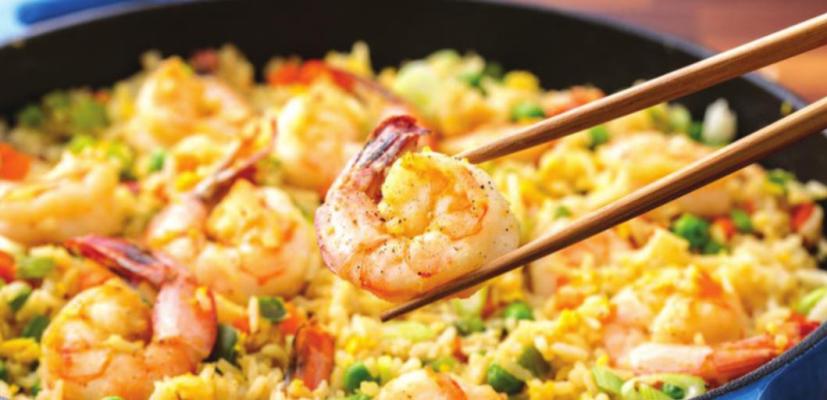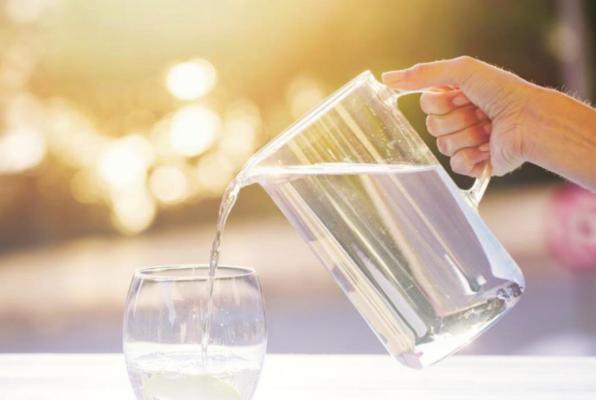Water for Health
Ever wonder how much water you should be drinking daily? The answer depends on a lot of different factors, such as your age, activity level, whether you’re pregnant or breastfeeding, the temperature outside, your medications, your health, the food you eat and even whether you have access to air conditioning.
The U.S. National Academies of Sciences, Engineering, and Medicine determined that an adequate daily fluid intake is about 15.5 cups (3.7 liters) of fluids a day for men and about 11.5 cups (2.7 liters) of fluids a day for women.
Other health experts often recommend people drink eight 8-ounce glasses of water per day. This is commonly known as the “8x8” rule. It may not apply to everyone, though. That may or may not be enough.
What’s clear is even mild dehydration can affect us. In a study published in Oxford Academic Journal, researchers found that a fluid loss of 1.36% after exercise impaired mood and concentration and caused headaches.
Another study, published in the journal Obesity, found that drinking more water than usual (before meals) helped with weight loss. Middle-aged obese or overweight participants were assigned to one of two groups for a 12-week period. Those who added 500 milliliters of water before their daily meals (compared to no water) lost 4 pounds more than those who didn’t drink water before their daily meals.
Drinking enough water also helps with constipation, preventing urinary tract infections and kidney stones, and skin hydration.
And it’s true other foods that contain water can help. Those include other beverages, celery, cucumber, lettuce, zucchini, watermelon, strawberries, cantaloupe, cauliflower, peaches, oranges and grapefruit, broth and soups, tomatoes, peppers, cabbage and yogurt.
As we age, water is even more important as aging brings about physical changes that affect the body’s ability to cool itself and stay hydrated. Medications can also affect a person’s ability to stay hydrated. In addition, many older people avoid drinking water because going to the bathroom is harder. They also may not “feel” thirsty anymore. Diseases such as dementia can make older adults more susceptible to dehydration as they may have a limited ability to communicate thirst.
Here are some tips to know you’re staying hydrated in the heat:
No. 1: Drink throughout the day for clear, pale urine.
No. 2: When you feel thirsty, drink.
No. 3: During high heat and exercise, drink more to offset any loss through sweat.
Q and A
Q: I know I need to eat more fruits and vegetables to be healthy. Are those fruit and vegetable pills I see advertised a good solution?
A: Products that claim to pack all the nutrition of fruits and vegetables into a little pill are too good to be true. They lack the hydrating water, most of the fiber and many of the other compounds naturally present in food. It’s unclear whether all the other nutrients are retained after the processing necessary to make the pills. There is not evidence you can substitute these pills for the real thing. Try to consume eat 2 1/2 to 4 cups of vegetables and 1 1/2 to 2 cups of fruit a day. A “cupequivalent” of vegetables is 1 cup of raw or cooked vegetables or vegetable juice or 2 cups of raw, leafy salad greens. A “cup-equivalent” of fruit is 1 cup of fruit, a half-cup of dried fruit, a small apple or banana or a cup of 100% fruit juice. Add a banana to your cereal, add a green salad at lunch and add chopped vegetables to casseroles, stir-fries and pasta dishes; snack on an apple or a handful of baby carrots or red pepper slices.
RECIPE
When the temperature’s high, I like a simple meal that can be prepared quickly for dinner. And as a bonus, it uses veggies from the garden or farmer’s market. You can chop the veggies ahead to decrease prep time that evening. Shrimp fried rice, adapted from Cooking Light, is one of our favorites.
SHRIMP FRIED RICE
Servings: 4
1 cup broccoli florets
7 teaspoons canola or peanut oil, divided
1 red bell pepper, cut into strips or diced
1 yellow bell pepper, cut into strips or diced
1 cup sugar snap peas, cut in half
1 tablespoon peeled, grated fresh ginger
1 tablespoon minced garlic
1 cup cooked white or brown rice, chilled
1 tablespoon dark sesame oil
12 ounces peeled and deveined medium shrimp
1 1/2 cups frozen edamame (shelled)
1/4 cup lower-sodium soy sauce
1 1/2 tablespoons rice vinegar
1 teaspoon Sriracha (hot chile sauce)
1/4 cup diagonally sliced green onions
Steam broccoli 4 minutes or until crisp-tender; set aside. Heat a large skillet over medium-high heat. Add 1 teaspoon canola or peanut oil to pan. Add bell peppers and sugar snap peas and stir-fry for 2 minutes. Combine vegetables and broccoli in a large bowl. Add remaining 2 tablespoons oil to pan; swirl to coat. Add ginger and garlic; stir-fry 10 seconds. Add rice; stir-fry 5 minutes or until lightly browned. Add rice to vegetable mixture. Wipe pan with paper towels. Return pan to medium-high heat. Add sesame oil to pan; swirl to coat. Add shrimp; stir-fry 1 minute. Add edamame; stir-fry 1 minute. Stir in soy sauce, vinegar and Sriracha; bring to a boil. Cook 3 minutes or until liquid thickens slightly. Stir in vegetable mixture and green onions. Cook 1 minute or until thoroughly heated. Serves 4 (serving size 2 cups).
Per serving: 368 calories; 26.6 grams protein; 27.1 grams carbohydrate; 15.7 grams fat (1.5 grams saturated); 129 milligrams cholesterol; 5.8 grams fiber; 560 milligrams sodium.
Charlyn Fargo is a registered dietitian with SIU Med School in Springfield, Illinois. For comments or questions, contact her at charfarg@aol. com or follow her on Twitter @ NutritionRD. To find out more about Charlyn Fargo and read features by other Creators writers and cartoonists, visit the Creators website at www. creators.com.


